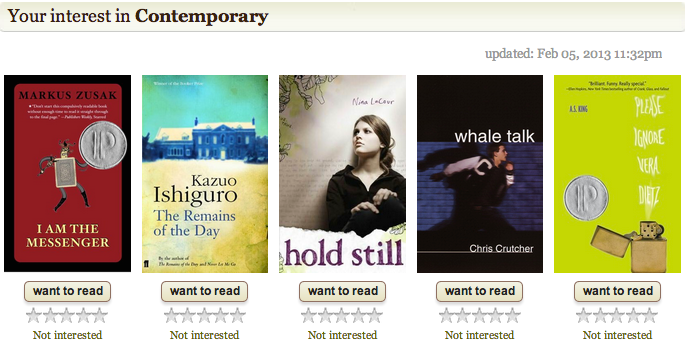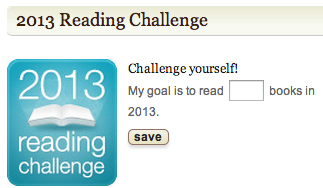
Encouraging young people to read has never been harder – on the one hand. Recess and lunchtimes at our school attest to a full-to-bursting library, but on closer inspection our boys are socialising around the games on their ipads. On the other hand, the technology we sometimes blame for a drop in an interest in literature could also become our saving grace in bringing the passion back in reading.

Photo source: http://pinterest.com/kellianneauthor/books-and-reading/
This year I’m keen to experiment with Goodreads as a platform for reading, sharing and discussing literature. There’s been a decent amount of interest from Year 9 and 10 English teachers, as well as from my team in the library. So, why am I so passionate about Goodreads?
Goodreads is the best of social media. I think it can work very effectively in schools. Just as blogging provides students with a real audience, peer as well as global, so does the Goodreads platform extend reading from a solitary experience to one which can be shared with a whole community. While the Premier’s Reading Challenge is a positive step in encouraging young people to read, I’m looking at more than the completion of a limited list of recommended reading, I’m interested in a platform where students can see what their peers are reading, where they can have a conversation around their reading.

Photo source: http://www.mybookcorner.com.au/articles/798-davide-cali-15-good-reasons-to-read-a-book.html
Reading can be much more than completing a book; within Goodreads it can involve:
- rating
- designating a shelf
- reading reviews
- writing reviews
- connecting with classmates to see what they’re reading, rating, reviewing
- connecting with broader community for the same class community for a text studied – the whole unit can take place within the class group
- easily finding similar books in the genre, author or a series
- following people to see what they’re reading, eg students could get ideas from each other or follow their teacher’s list to broaden their reading scope
- following people to see their ratings and reviews
- joining or creating discussions
- following authors and becoming a fan to see their biography, see what books they’ve written, their series, what they’re reading, their latest activity eg. reviews/discussions; sending them a message, comparing your reading tastes to theirs; discovering their blogs and booktrailers/videos
- creating your own groups or joining public ones
Melbourne High School is full of boys who respond to being stretched and challenged. They are often reading at a sophistocated level and appreciate the opportunity to read beyond a generic list for their age group. Goodreads allows students to browse eclectic group topics, for example, the group for The Year of Reading Proust or Old Norse Literature.
The virtual Book shelves default to “read”, “currently reading” and “to-read.” Students can add more individualized shelves to their profile, organising books by genre, reading challenge, books loved or loathed, by discussion group, and more. The possibilities for teachers are varied. I can imagine rich discussion of texts including all students in a way not possible in class. Social media connects students to each other, and beyond the classroom; it creates opportunities for real conversations, for many literacies, for digital citizenship.
Some teachers have said that they enjoy the competition aspect of Premier’s Reading Challenge. Goodreads provides this also –

If you like the competitive aspect of a reading challenge, you can tailor this challenge to suit you either in the form of a class challenge, a year level challenge, or whatever you like. You could create your own list of books, different levels of difficulty, selection of genres, or you could leave it open.
Students will feel at home in the Facebook-like functioning of Goodreads. They are so used to being connected, it makes more sense to them and is more engaging than a traditional classroom where they don’t often share their learning. It’s fun and it really does encourage reading.
I’m looking forward to seeing how teachers customise Goodreads to their classes and teaching styles. I’m hoping we’ll bring our students back to a love of literature, ideas, good stories, powerful characters, clever plots and controversial issues in the form of books.
Of course, there is more than one way to engage our students in reading. As I’ve mentioned before, students will be enriched by Judith Way’s high-quality Readers’ Cup program. In any case, reading promotion in schools will be most successful when you engage students in a relational way, providing opportunities for them to have conversations about how they felt or what they thought about a book.

Photo source: http://pinterest.com/kellianneauthor/books-and-reading/













































